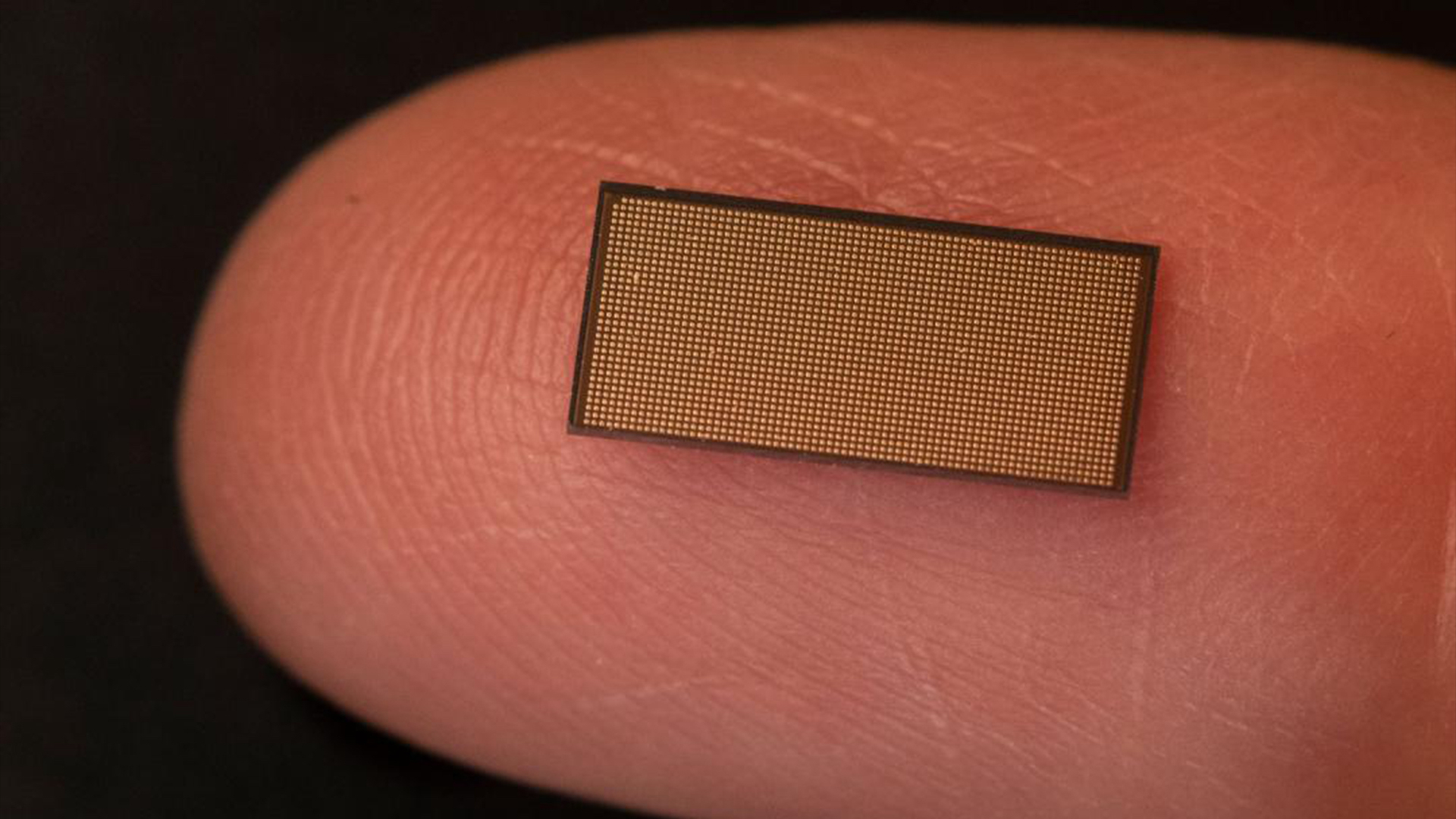CLOSE
About Elements
TANAKA is a leading company in the field of precious metals.
Advanced materials and solutions that support societal progress, the development stories behind them, the voices of engineers, and our management philosophy and vision—
Elements is an online media platform that shares insights that lead to a better society and a more prosperous future for the planet under the slogan “Mastering Precious Metals.”

Intel unveils largest-ever AI ‘neuromorphic computer’ that mimics the human brain

Scientists at Intel have built the world’s largest neuromorphic computer, or one designed and structured to mimic the human brain. The company hopes it will support future artificial intelligence (AI) research.
The machine, dubbed “Hala Point,” can perform AI workloads 50 times faster and use 100 times less energy than conventional computing systems that use central processing units (CPUs) and graphics processing units (GPUs), Intel representatives said in a statement. These figures are based on findings uploaded March 18 to the preprint server IEEE Explore, which have not been peer-reviewed.
Hala Point will initially be deployed at Sandia National Laboratories in New Mexico, where scientists will use it to tackle problems in device physics, computing architecture and computer science.
Powered by 1,152 of Intel’s new Loihi 2 processors — a neuromorphic research chip — this large-scale system comprises 1.15 billion artificial neurons and 128 billion artificial synapses distributed over 140,544 processing cores.
It can make 20 quadrillion operations per second — or 20 petaops. Neuromorphic computers process data differently from supercomputers, so it’s hard to compare them. But Trinity, the 38th most powerful supercomputer in the world boasts approximately 20 petaFLOPS of power — where a FLOP is a floating-point operation per second. The world’s most powerful supercomputer is Frontier, which boasts a performance of 1.2 exaFLOPS, or 1,194 petaFLOPS.
How neuromorphic computing works
Neuromorphic computing differs from conventional computing because of its architecture, Prasanna Date, a computer scientist with the Oak Ridge National Laboratory (ORNL), wrote on ResearchGate. These types of computers use neural networks to build the machine.
In classical computing, binary bits of 1s and 0s flow into hardware like the CPU, GPU or memory before processing calculations in sequence and spitting out a binary output.
(Image credit: Walden Kirsch/Intel Corporation)
In neuromorphic computing, however, a “spike input” — a set of discrete electrical signals — is fed into the spiking neural networks (SNNs), represented by the processors. Where software-based neural networks are a collection of machine learning algorithms arranged to mimic the human brain, SNNs are a physical embodiment of how that information is transmitted. It allows for parallel processing and spike outputs are measured following calculations.
Like the brain, Hala Point and the Loihi 2 processors use these SNNs, where different nodes are connected and information is processed at different layers, similar to neurons in the brain. The chips also integrate memory and computing power in one place. In conventional computers, processing power and memory are separated; this creates a bottleneck as data must physically travel between these components. Both of these enable parallel processing and reduce power consumption.
Why neuromorphic computing could be an AI game-changer
Early results also show that Hala Point achieved a high energy efficiency reading for AI workloads of 15 trillion operations per watt (TOPS/W). Most conventional neural processing units (NPUs) and other AI systems achieve well under 10 TOPS/W.
Neuromorphic computing is still a developing field, with few other machines like Hala Point in deployment, if any. Researchers with the International Centre for Neuromorphic Systems (ICNS) at Western Sydney University in Australia, however, announced plans to deploy a similar machine in December 2023.
Their computer, called “DeepSouth,” emulates large networks of spiking neurons at 228 trillion synaptic operations per second, the ICNS researchers said in the statement, which they said was equivalent to the rate of operations of the human brain.
Hala Point meanwhile is a “starting point,” a research prototype that will eventually feed into future systems that could be deployed commercially, according to Intel representatives.
These future neuromorphic computers might even lead to large language models (LLMs) like ChatGPT learning continuously from new data, which would reduce the massive training burden inherent in current AI deployments.
This article was written by Keumars Afifi-Sabet from Live Science and was legally licensed through the DiveMarketplace by Industry Dive. Please direct all licensing questions to legal@industrydive.com.
Related Information
Technology Trend and Advanced Packaging Material for Power Device
Power device is key component for a wide range of applications such as smartphones, electronic devices, next-generation mobility including EV and HEV, cellular base stations, power control for renewable energy and so on. Its technology development is thriving day by day.
We introduce advanced packaging technology trends and cutting-edge materials designed to address challenges such as high heat dissipation, high heat resistance, reliable bonding in manufacturing, and miniaturization.
![]()












